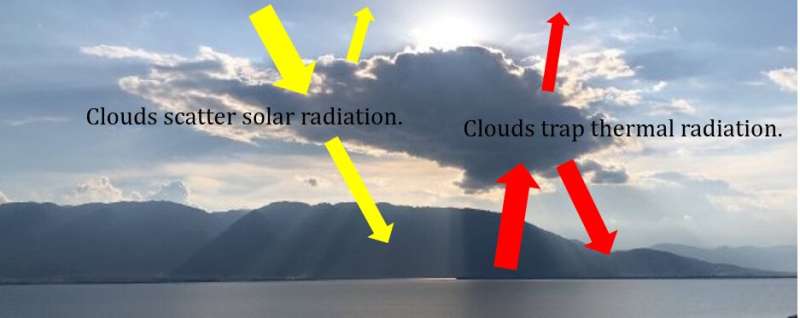Studying short-term cloud feedback to understand climate change in East Asia

It is very important to understand how clouds responded to climatic change in the past, as it can help in reducing errors when predicting future global warming using climate models. Estimates of short-term cloud feedback based on observations offer a way to assess and improve the abilities of climate models in simulating cloud feedback, according to Hua Zhang, a scientist and professor at the Chinese Academy of Meteorological Sciences, and one of the authors of a recently published study in Advances in Atmospheric Sciences.
"Cloud radiative forcing in the East Asian monsoon region has unique characteristics, and the current deviation and uncertainty in simulating radiation budgets in East Asia are all related to its feedback, which greatly constrains our understanding of climate change in the region using climate models," explains Zhang. "Using observational data to study short-term cloud feedback in East Asia can provide an observational constraint on long-term feedback there, and thus help us to assess the contribution of cloud feedback to climate sensitivity."
First, a new set of cloud radiative kernels were built by Prof. Zhang and her team, based on the BCC_RAD radiation model, and the cloud feedback in response to interannual climate variability in East Asia was estimated from these kernels combined with cloud measurements from MODIS onboard NASA's Aqua satellite from July 2002 to June 2018.
In order to reveal the spatial distribution and seasonal variation of feedbacks due to different cloud types, the team adopted the cloud classification method provided by the ISCCP (International Satellite Cloud Climatology Project) dataset and selected four subregions according to the surface and monsoon types. The strongest cloud feedback was located in the subtropical monsoon region, mainly due to the contributions of nimbostratus and stratus.

They found that short-term cloud feedback in East Asia is mainly driven by decreases in mid- and low-cloud fraction, resulting from changes in the thermodynamic structure of atmosphere, and a decrease in low-cloud optical thickness, related to changes in cloud water content.
"Short-term cloud feedback is a useful variable for estimating the uncertainties relating to clouds, and it can provide a reference for the study of long-term cloud feedback and narrowing the inter-model uncertainties in long-term cloud feedbacks through the relationship between long- and short-term cloud feedbacks in East Asia," concludes Prof. Zhang.
More information: Fei Wang et al, Analysis of Short-term Cloud Feedback in East Asia Using Cloud Radiative Kernels, Advances in Atmospheric Sciences (2020). DOI: 10.1007/s00376-020-9281-9
Provided by Chinese Academy of Sciences




















